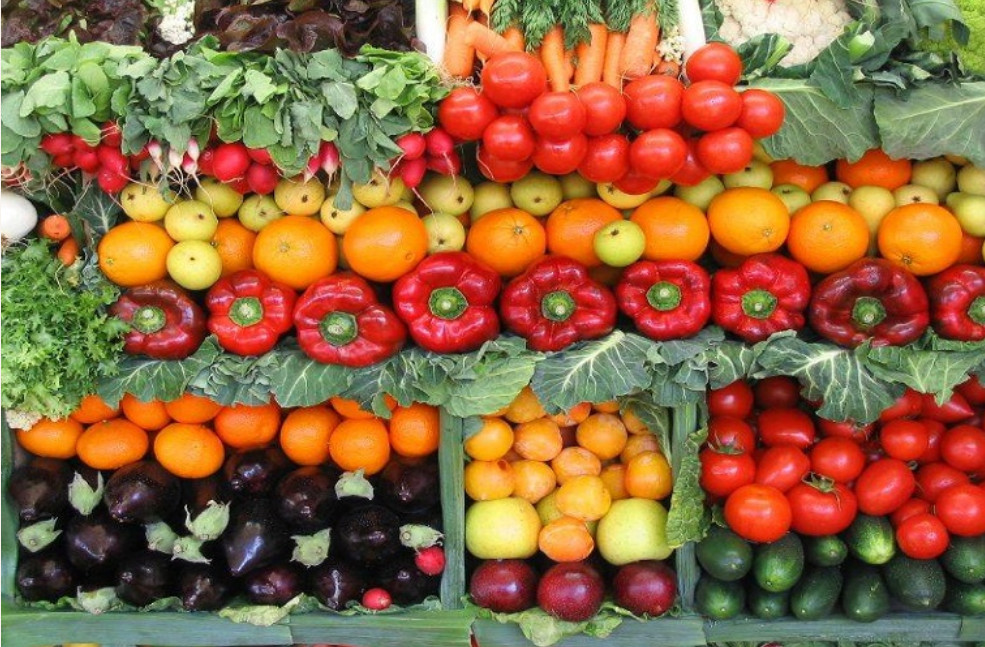
Consumers put their hands in their pockets to buy fruits and vegetables, precisely “crushing” the daily budget of families.
Now, fruit and vegetable products reach consumers at a price three times higher than what the producer sells for. A typical example of this is Merlin oranges that leave the field for €0.15-0.25 per kilo and end up being sold in the supermarket for €0.80-0.85 per kilo.
Fruit and vegetable products reach consumers at a price three times higher than what the producer sells for
Accordingly, screaming apples leave producers at €0.60 per kilo and reach €1.80 on the shelf. Tomatoes whose production price ranges from 0.80 to 1 euro per kilo reach the consumer for 1.85 euros.
Some of the reasons for these increases are objective. The climate crisis is leading to untimely rains, droughts and heatwaves that damage crops and reduce production, which struggles to keep up with demand.
In addition, geopolitical conflicts lead to an increase in fertilisers, transportation and energy. However, a very significant part of the increases is due to the golden roads that agricultural products follow before they end up on our plates.
In addition, the multiplicity of intermediaries acting as links in the supply chain inflates prices step by step. However, there is also a strangeness in the aimless movement of products from the periphery to the capital and from there again to the neighboring areas from where they started their journey, to finally be placed on the shelves.
Methods and increments
“Products do not leave us directly to the consumer. Their price is affected by the number of hands they will pass through before reaching the consumer. These hands are the so-called middlemen. That is, the wholesaler, the merchant. They may even pass through six hands before reaching the grocery store, for example. The more hands there are, the higher the final price. However, the producer only enjoys one-third of the price of the product purchased by the consumer, President of the Anatoli Agricultural Cooperative Giorgos Karalakis told NEA.
“Wholesale prices in the vegetable market differ significantly from producer prices, with the gap between them ranging between 60% and 65%.”
The often labyrinthine path of fruits and vegetables and the subsequent duties on their final price are analyzed in “NEWS” by the Special Advisor of the Association of Greek Fruit, Vegetable, Juice Exporting and Trade Companies “Incofruit-Hellas” Giorgos Polychronakis:
“We produce the product, harvest it and transport it to the packaging plant. There the product is processed, separated, standardized and classified into quality categories. The inedible fruits are removed, standardized and packed into larger and smaller packages. This process has a cost on price with labor and packaging materials. They are loaded and transported to the next stage, which is either bulk purchasing or export to a foreign country. In the absence of agents, there are middlemen who mediate the sale or purchase of the product. It is then directed to retail markets, such as supermarkets, grocery stores, and street markets. Shipping adds cost An additional 35% to the price.
In addition to the above, he points out that wholesale prices in the vegetable market differ significantly from producer prices, with the gap between them ranging between 60% and 65%.
Unexplained gap
For his part, the head of the agricultural cooperative in Agia Larissa, Giorgos Zikos, spoke to “NEWS” about an unjustified gap between the price at which the product starts from the field and the price at which it ends up on the shelf. :
“The products leave producers for 0.30-0.35 euros and end up at 2.50-3 euros. Part of the increase is certainly justified by standardization, which burdens them with 0.40 euros and a fee that sets the total price at 0.90 euros. But beyond that, The rest of the increase I cannot explain or understand. It is unfair for the farmer to bear the high costs of production. When you sell for 1 euro or 0.90 euros and you see the product going for 2.5 or 3 euros, you are disappointed because this money does not go to the producer to make agriculture sustainable. No “We can lower prices and others continue to profit at our expense.”
Both ways
But how is profit made? According to Christos Giannakakis, Vice President of the National Federation of Agricultural Cooperatives, there are two methods used by middlemen to inflate prices and make profits at the expense of producers and consumers:
Intermediaries, useless labor-to-labor transfers and necessary processing are, according to producers, the main reasons for the increase we see on shelves.
“One company accepts products from a cooperative and prices them higher than the person who bought them. Then a second company steps in and prices them higher, increasing their value again.
Finally, they end up in the supermarket at a higher price. This intermediate pricing, which is highly realistic and effectively avoids taxes, is one answer to “why products reach the market so expensive.” Another way – due to the impossibility of supplying the entire chain from a single product – is mediation in product concentration.
For example, a producer produces 20 tons of product. But the chain needs 500 tons. There is an intermediary who collects the product, i.e. 20 tons from one farmer, 50 tons from another, 30 tons from a third, and so on, in order to collect the quantity required to cover the needs of the chain.
So in this case, where between the farmer and the retailer there is one or two intermediaries, who do what is called product concentration, one finds profiteering. The result of all of the above is that while the real value of the product in the field is, for example, 0.70 euros per kilo, it reaches the consumer at a price of 2-2.30 euros.”
Is there an answer?
Intermediaries, unnecessary movements from one province to another and the necessary processing, according to representatives of producers, are the three main reasons why fruits, vegetables and other fruits and vegetables reach the shelves at prices up to 300% higher than when they were collected.
In this context, Vice President of the National Association of Agricultural Cooperatives, Christos Giannakakis, stated that the association is preparing next month to establish an export company with a national scope that will directly market products in international and local markets:
“We want to do the so-called product concentration and enter the markets with promotional programmes, in order to promote agricultural products and give a good income and exit so that others do not bypass the Greek farmer and at the same time organize a system for the local market, so that supermarket chains are supplied directly from the production without intermediaries. And if there is “Let there be only one mediator. There should not be many who are covering up speculation.”
The head of the agricultural cooperative in Agia Larissa, Giorgos Zikos, also talks about creating cooperatives and groups of producers who “will be able to sell products without all these intermediaries who make a lot of money and burden the shelf.” the prices”.
For his part, Giorgos Polychronakis, Special Advisor to the Greek Fruit, Vegetable and Juice Exporters and Traders Association “Inkofruit-Hellas”, proposes the establishment of a single new observatory that records prices from product to shelf. “Unless such a body is established, prices in the domestic market will continue to decline in terms of excess prices.”

“Avid problem solver. Extreme social media junkie. Beer buff. Coffee guru. Internet geek. Travel ninja.”





More Stories
With reductions in electricity tariffs – Newsbomb – News
Are you okay when you tell us we're okay?
A new wave of retirement journeys – we will reach a record high in 2024 with more than 212,000 retirements – a ceiling of €400 million